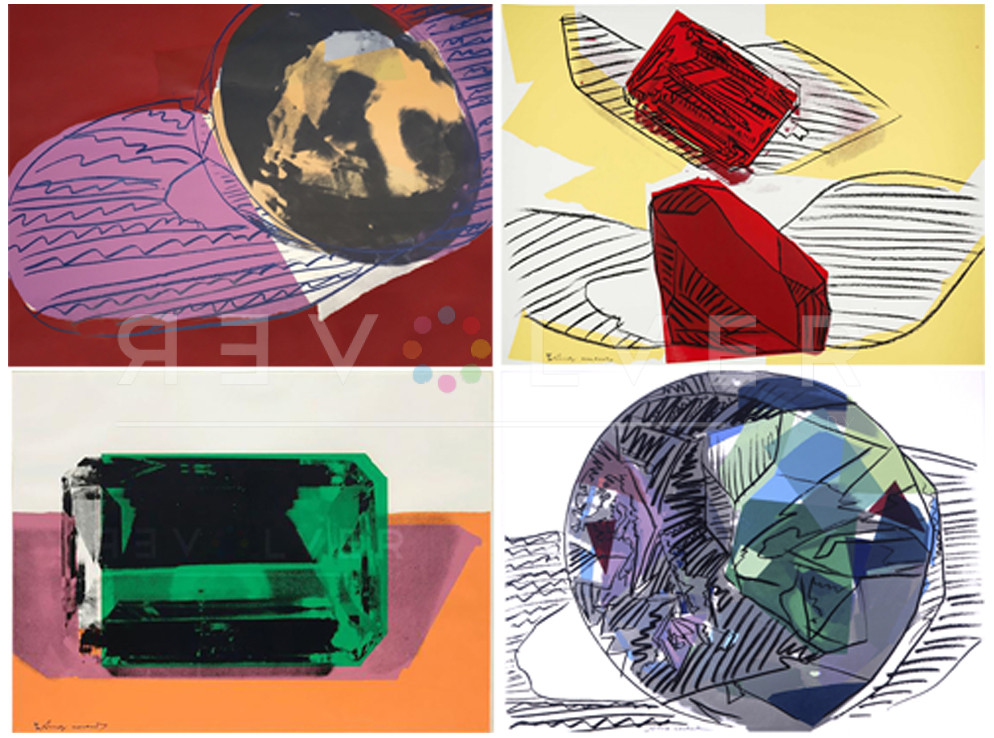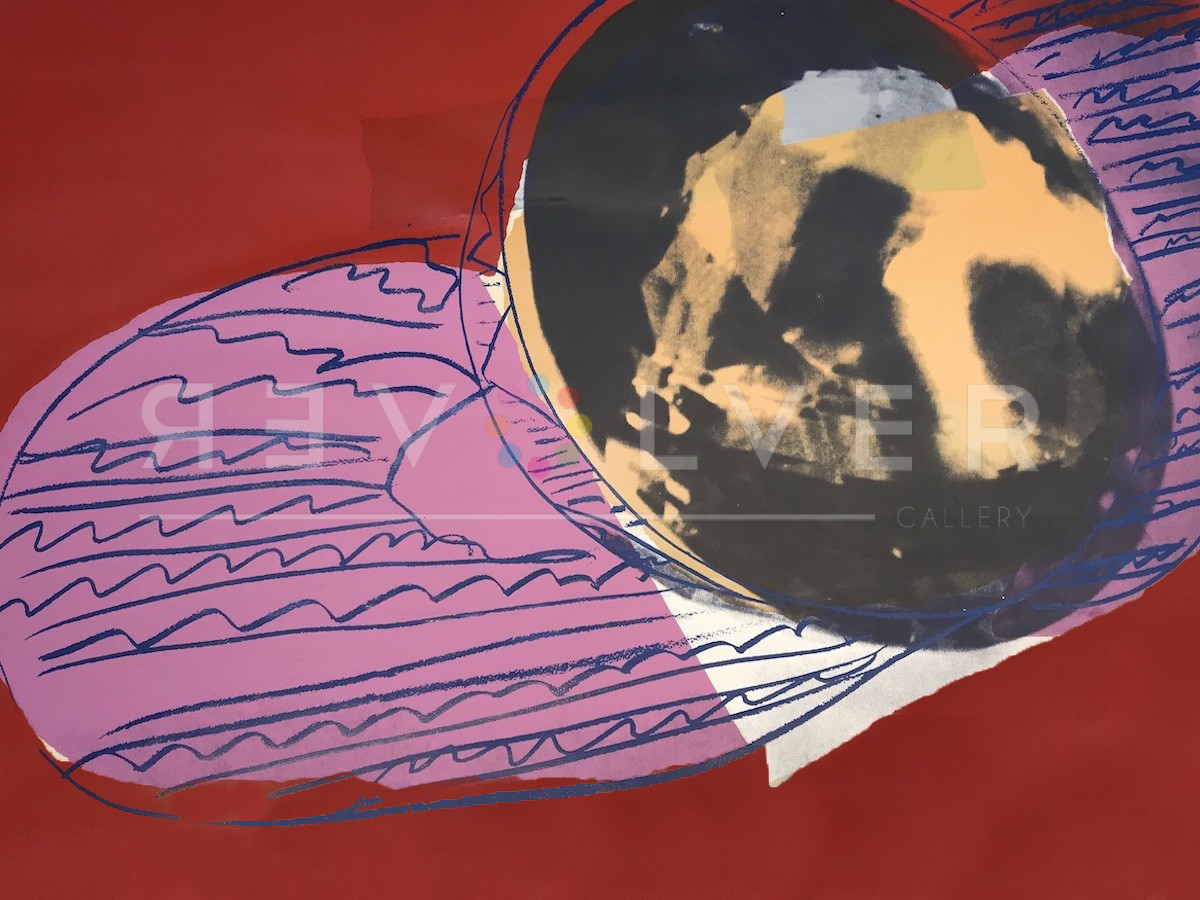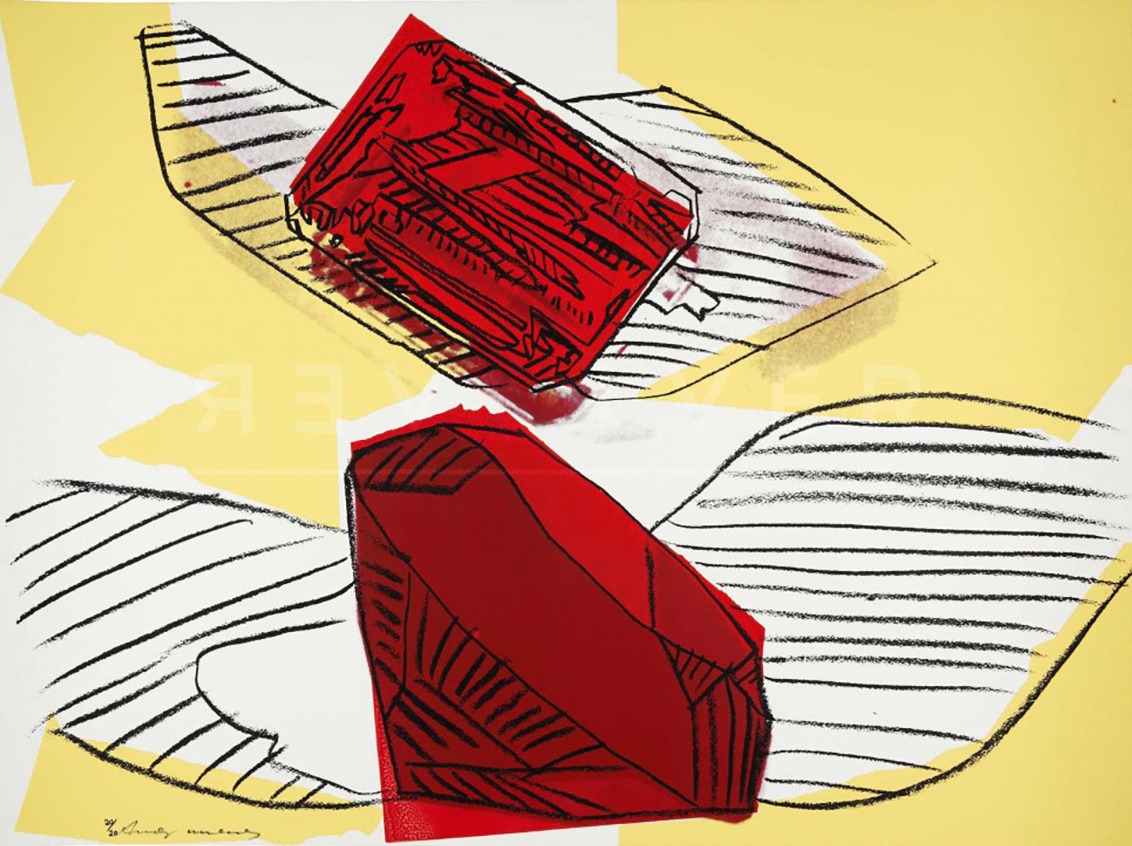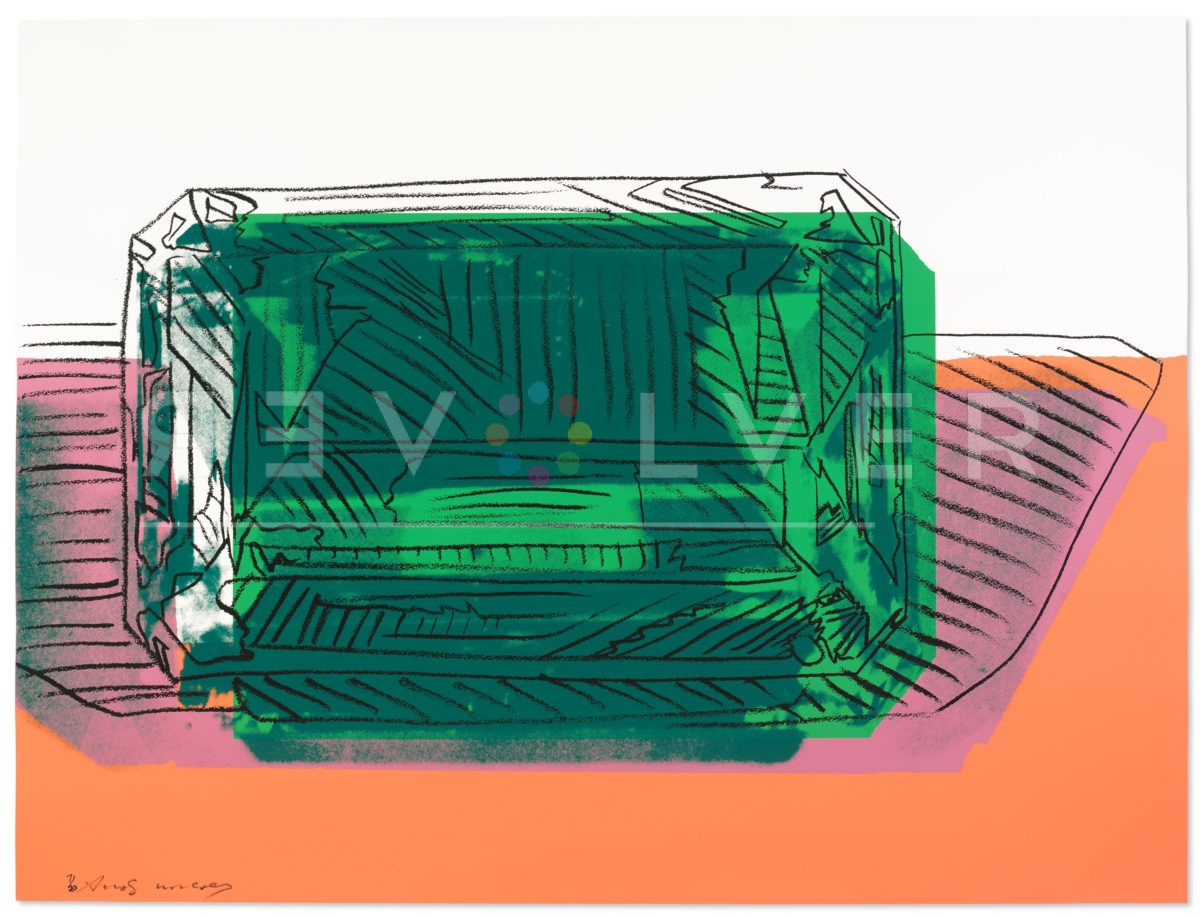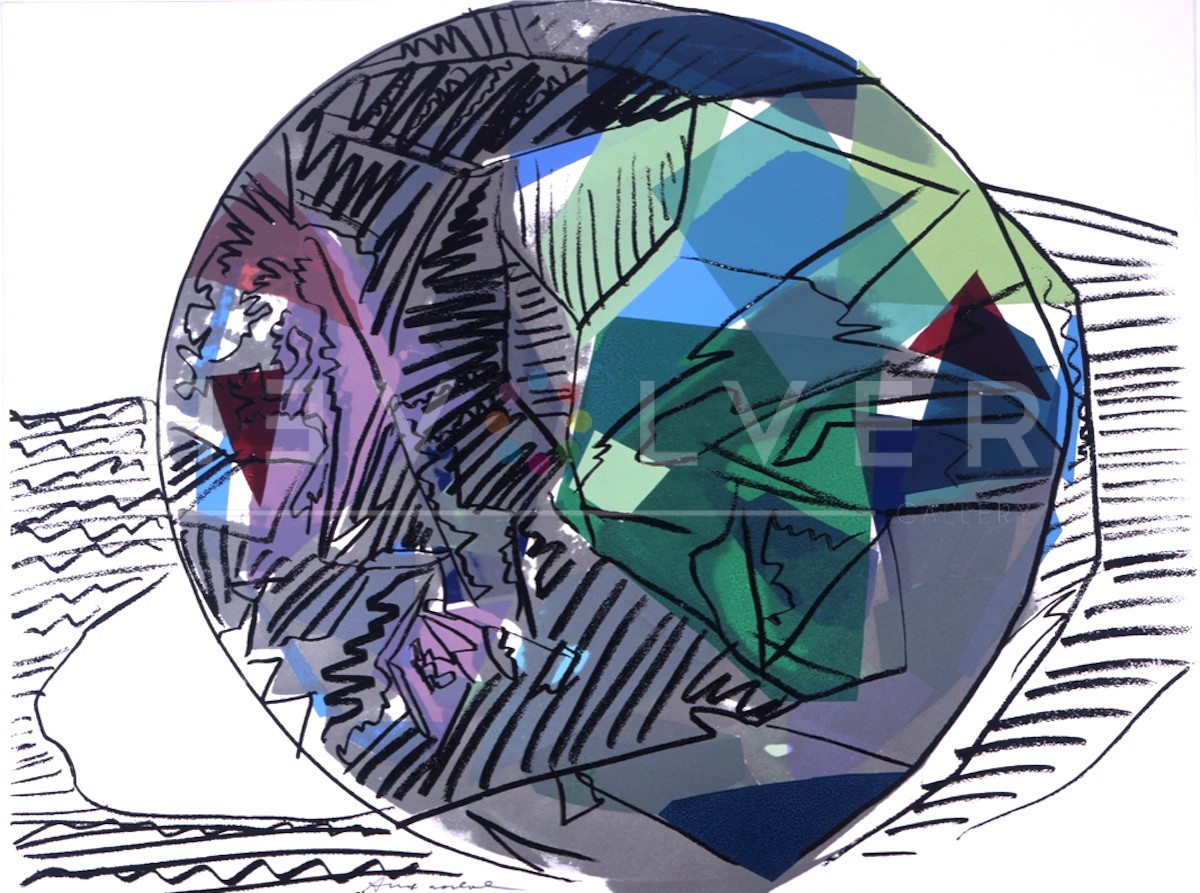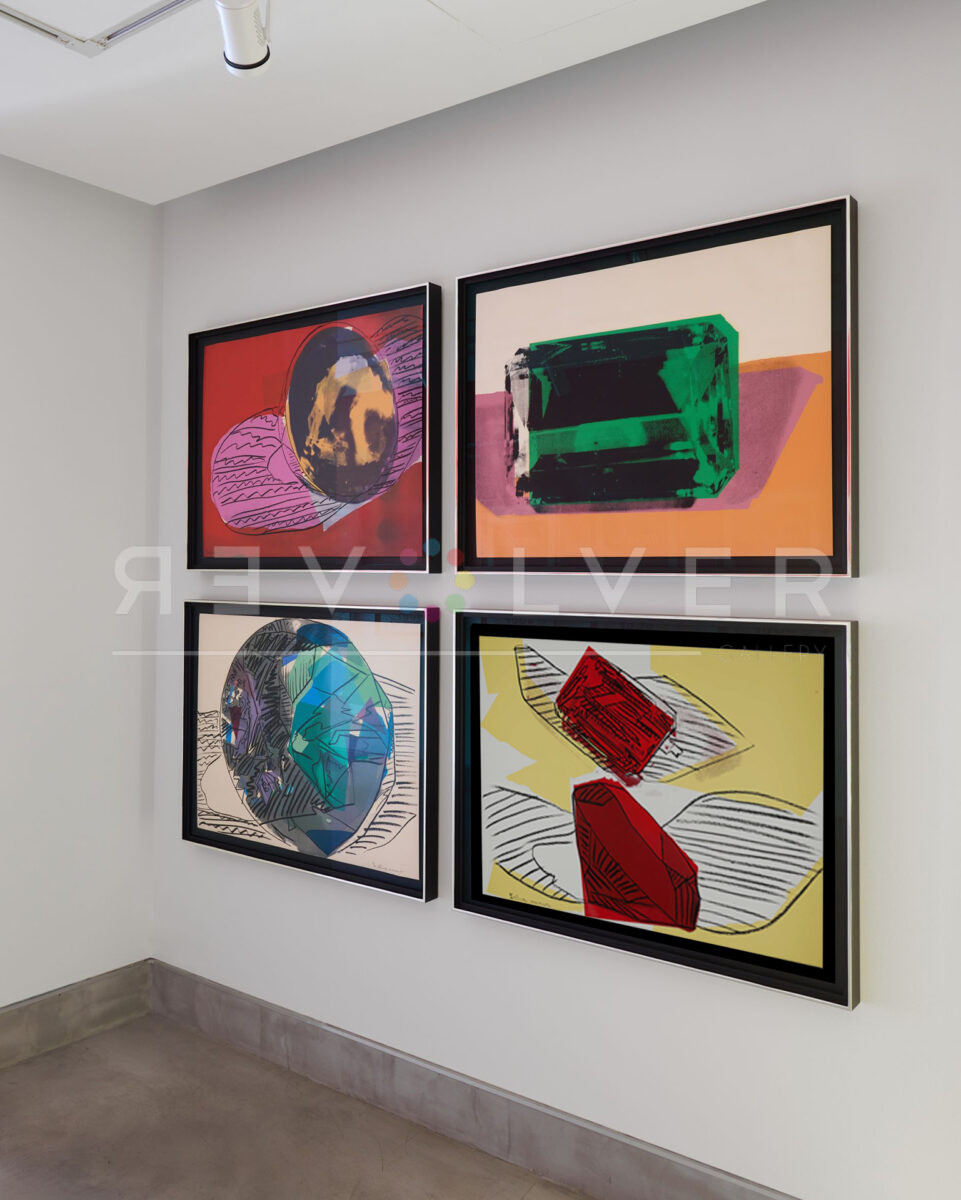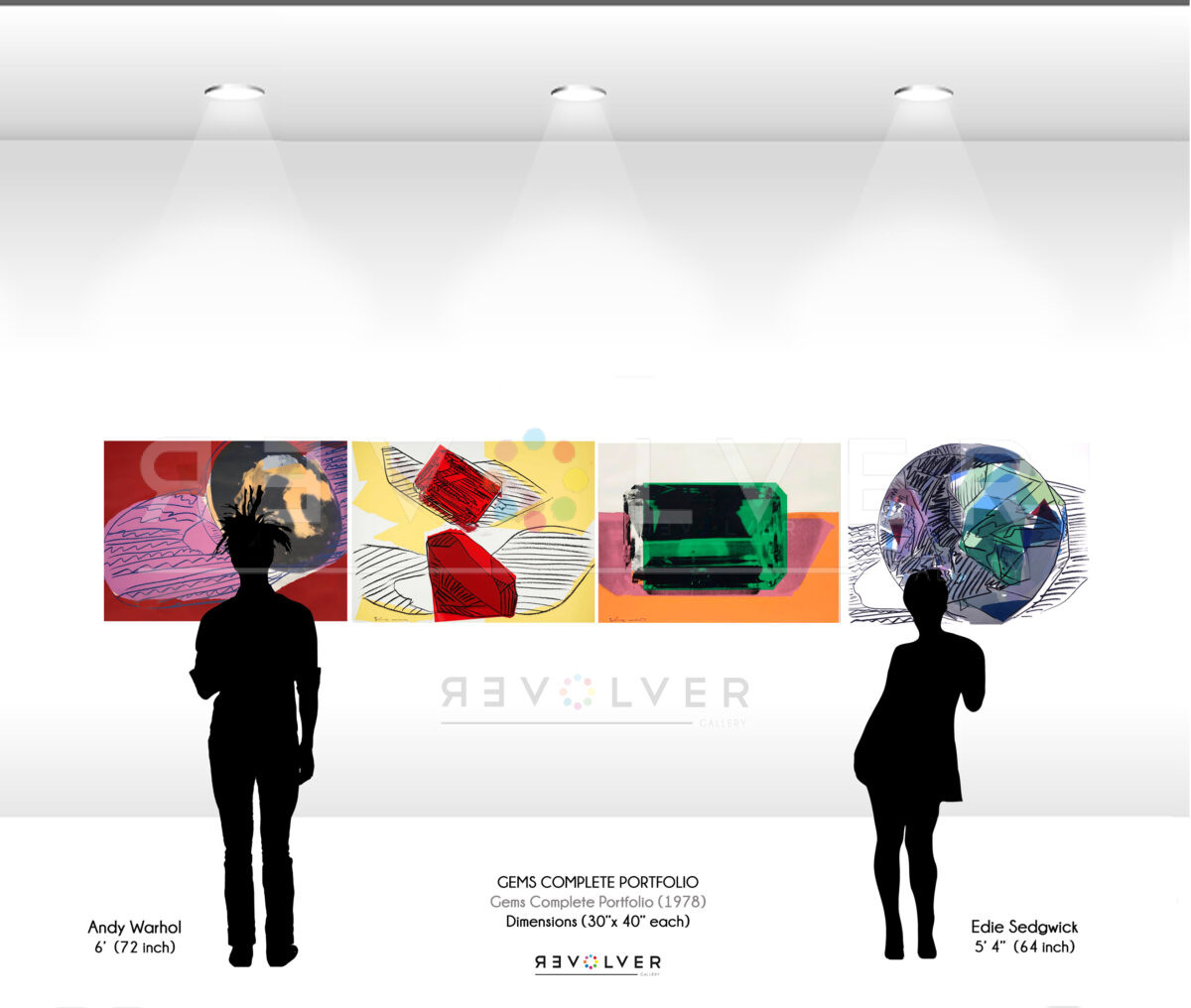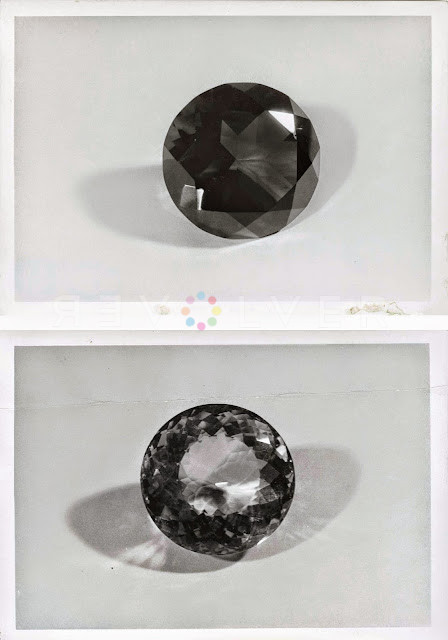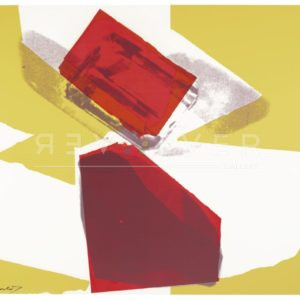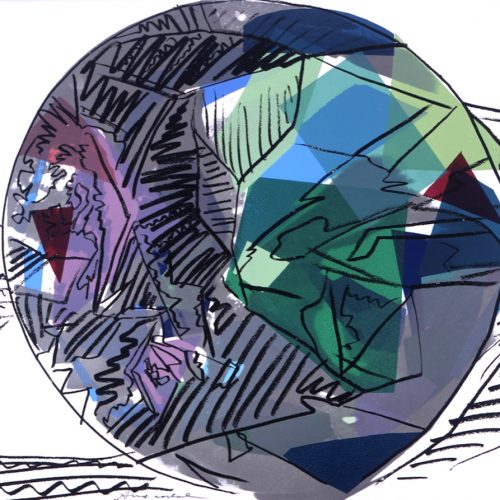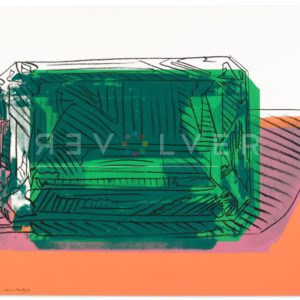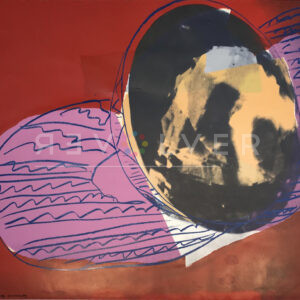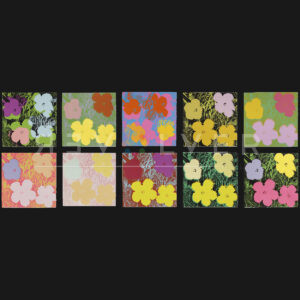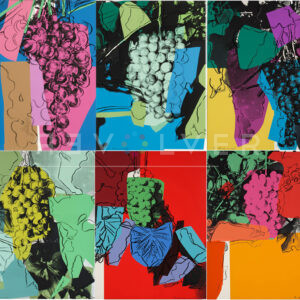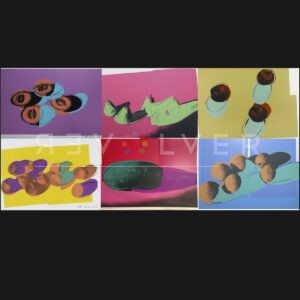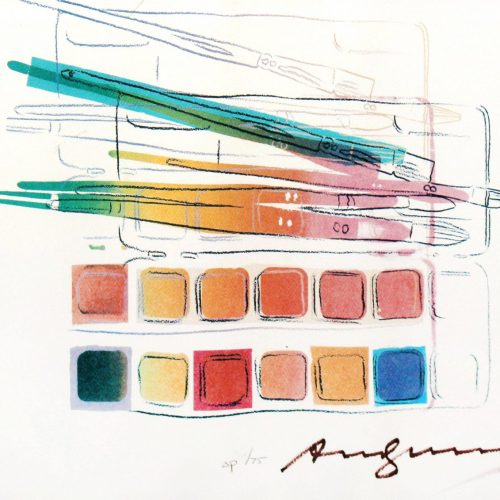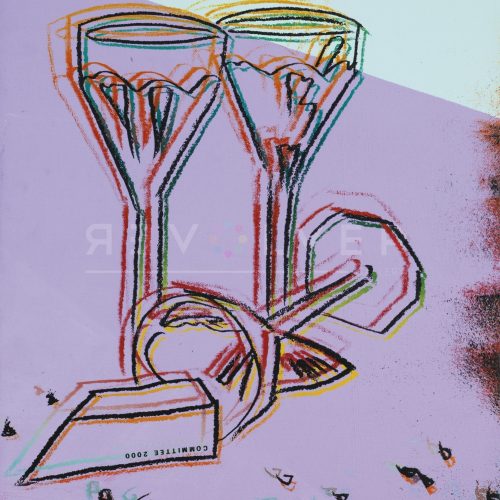Andy Warhol’s four part Gems complete portfolio is a playful variation on still life, showcasing the individuality of every stone, each embodying the idea of beauty and glamour that resonates with the rest of Warhol’s work. Warhol became a collector of jewelry after his success and often wore elaborate pieces by Cartier or Harry Winston when he attended parties.
The Gems complete portfolio includes FS II.186, with deep reds and pinks that accentuate the image of a ruby gemstone. The piece is perhaps an homage to actress Liz Taylor, one of Warhol’s celebrity muses, who was also known to appreciate rubies. Recently, her ruby ring set broke the “price per carat” record when it was auctioned at Christie’s for 4.2 million dollars.
The Gems complete portfolio, featuring emeralds, rubies and diamonds was created in the later years of Warhol’s life. The Gems suite has a personal dimension to it through Warhol’s secret love of feminine things, which he sometimes concealed by wearing his jewelry under his clothes, despite his wealth and celebrity. Warhol’s appreciation of all things decadent, comes across in this series and other works he did around the same time, including After The Party, 1979, Shoes, 1980, and Reigning Queens, 1985. The Gems complete portfolio includes FS II.186-189.
WARHOL’S GEM OBSESSIONS AND COLLECTIONS
As lavish as Warhol’s life was socially he rarely flaunted jewels and chose to hide them beneath his clothes. Warhol’s obsession with glamour and jewels was greatly unknown until his extensive jewelry collection was brought to light after he died in 1987. Of course Andy amused the idea of jewels “When I am in Rome I always visit Bulgari, because it is the most important museum of contemporary art,” Warhol once said. Another time he proclaimed, “It would be very glamorous to be reincarnated as a big ring on Elizabeth Taylor’s finger” which led people to think that Warhol’s Gems collection served as a testament to Taylor and her distinguished jewels. Warhol recorded a few thoughts on jewelry in his infamous Diaries and in conversations published in Interview magazine. Besides this, there was not much evidence for how serious his obsession became.
Warhol’s extensive jewelry collection was not recognized until his estate was sold at Sotheby’s auction in 1988. There were volumes to the sales including a jewelry catalogue. Items such as mid-century pieces from Cartier, Tiffany, Elsa Peretti, Bulgari, and Seaman Schepps among many others were featured in the catalogue. One of the most rare jewels that was unidentified in the jewelry catalogue was a ‘Beribboned Heart’ bangle bracelet by René Boivin originally created for Millicent Rogers and later owned by Andy Warhol. Where Warhol acquired Roger’s Boivin heart is still a mystery to this day.
The contents of his townhouse were sold at auction in 1988. Two curators worked through Warhol’s archives, where they discovered a secret space between two cabinets filled to the brim with jewels. There was so much that it filled another complete catalogue at Sotheby’s in December of 1988 that was titled The Andy Warhol Collection, Jewelry and Watches Part II. In the introduction to the Jewelry Part II Catalogue there was an essay by Fred Hughes who was Warhol’s manager and sole executor of his estate. It read….
“Why did Andy prefer to hide this jewelry in his house and not keep it in a bank vault? Possibly because he felt reassured by assets he could see and which were easily within reach. Possibly because of the tactile and aesthetic pleasure which he derived from his watches and jewelry, as with everything else in his collection. Possibly because he had inherited an old-world distrust of banks from his mother, and while he had kept some of the jewelry sold in [the May Sotheby’s 1988 auctions] in safe deposit boxes, and some in a safe in his house, he still felt the need for a hidden treasure. Possibly because he loved to have secrets, and this particular secret, to my knowledge, he shared with no one. Of course, this is all speculation, as Andy’s behavior was highly idiosyncratic and unpredictable. He and his legacy continue to amaze and delight me.
This unexpected discovery of wonderful pieces of jewelry that Andy had acquired over the years includes unmounted diamonds–tiny to large–sapphires, emeralds, Art Deco jewelry by Cartier and Van Cleef & Arpels; Peretti and Schlumberger designs for Tiffany; contemporary pieces by David Webb and Seaman Schepps; almost 100 watches from Patek Philippe, Rolex, Cartier, and other distinguished watchmakers. They all show that same fascination and obsession with design, color, shape, and texture that enhanced Andy’s life, inspired him in his collecting, and were so essential to his own aesthetic.”

